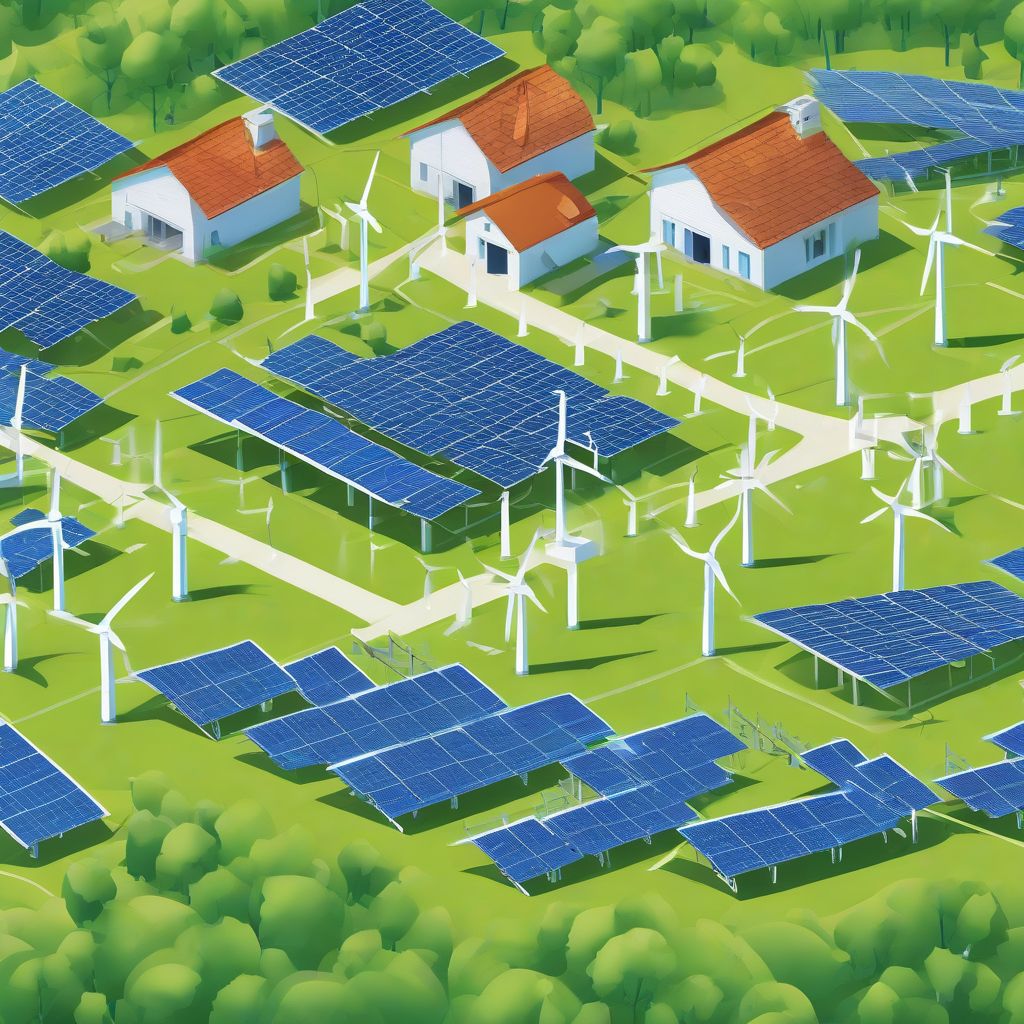Have you ever dreamt of harnessing the power of nature to light your home and fuel your community? It’s no longer a distant dream, but a growing reality thanks to the rise of community solar and wind energy projects. These initiatives are empowering individuals and neighborhoods to embrace clean energy, reduce their carbon footprint, and even save money on their utility bills. Let’s explore this exciting trend and discover how it’s transforming the energy landscape.
What are Community Solar and Wind Energy Projects?
Community solar and wind projects allow individuals and businesses to benefit from renewable energy generation without installing their own systems. Subscribers essentially “buy-in” to a shared solar or wind farm and receive credits on their electricity bills based on the energy produced by their share. This model makes renewable energy accessible to those who may not have the roof space, upfront capital, or suitable location for individual installations, such as renters or those living in shaded areas.
Community Solar: Powering Neighborhoods with Sunshine
Community solar projects involve a shared solar array located within a specific geographic area. Subscribers typically pay a monthly fee or purchase shares in the project, and in return, receive credits on their utility bills for the electricity generated. These projects can be ground-mounted, rooftop-mounted, or even incorporated into carports or other structures.
Community Wind: Harnessing the Power of the Breeze
Community wind projects operate similarly to community solar, with subscribers investing in a shared wind turbine or wind farm. The electricity generated is fed into the grid, and subscribers receive credits on their bills proportional to their share of the project. These projects offer a way for communities to tap into a clean and abundant energy source.
Driving Factors Behind the Growth
The growth of community solar and wind projects can be attributed to a confluence of factors, including:
Falling Costs of Renewable Energy Technologies
The cost of solar and wind energy technologies has plummeted in recent years, making them increasingly competitive with traditional fossil fuels. This has made community projects more financially viable and attractive to both investors and subscribers.
Increased Public Awareness and Demand for Clean Energy
Growing public awareness of climate change and the environmental benefits of renewable energy has fueled demand for clean energy solutions. Community projects offer an accessible and tangible way for individuals to participate in the clean energy transition.
Supportive Government Policies and Incentives
Many governments at the local, state, and federal levels have implemented policies and incentives to encourage the development of community solar and wind projects. These include tax credits, grants, and streamlined permitting processes. For example, the Investment Tax Credit (ITC) in the United States offers a significant tax credit for renewable energy projects.
Community Benefits and Local Economic Development
Community solar and wind projects can provide a range of benefits to local communities, including job creation, increased property values, and a boost to local economies. They can also provide energy resilience and independence, particularly in areas prone to power outages.
 Community Solar and Wind Farm
Community Solar and Wind Farm
Overcoming Challenges and Ensuring Equitable Access
While the future of community solar and wind looks bright, some challenges remain. These include:
Streamlining Permitting and Interconnection Processes
Navigating the permitting and interconnection processes can be complex and time-consuming, hindering the development of new projects. Simplifying these processes is crucial for accelerating growth.
Ensuring Equitable Access and Benefits for All Communities
It’s essential to ensure that community solar and wind projects benefit all communities, including low-income households and communities of color, who have historically been disproportionately impacted by environmental injustice. Targeted programs and policies can help address these equity concerns.
Educating Consumers and Building Trust
Many people are still unfamiliar with community solar and wind projects. Educating consumers about the benefits and how to participate is crucial for driving wider adoption.
The Future of Community Power
The growth of community solar and wind projects represents a significant shift in the energy landscape. As technology continues to advance and costs continue to decline, these projects are poised to play an increasingly important role in powering our communities and accelerating the transition to a clean energy future. Imagine a future where every neighborhood has access to clean, affordable, and locally-generated energy. That future is within reach, thanks to the growing momentum of community solar and wind.
Conclusion
Community solar and wind energy projects offer a powerful pathway to a cleaner, more sustainable future. By harnessing the power of the sun and wind, these initiatives empower individuals, strengthen communities, and help combat climate change. While challenges remain, the continued growth and innovation in this sector offer hope for a brighter energy future. What role will you play in the community power revolution? Share your thoughts and ideas in the comments below!



